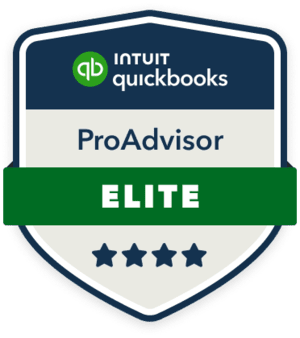Imagine you’re sitting at your kitchen table on December 31, 2025, reflecting on what an amazing year you’ve just experienced!
What made this year so wonderful? (Pause for self-reflection.)
How will you know that the year was a success?
Several years ago, I became frustrated with the traditional forecasting models used by small businesses. Why? These models felt limiting. We typically would start by looking at how we finished the previous year, analyzing trends, and then building a plan based on reasonable expectations of those trends continuing. If we anticipated concrete changes, we would factor those into our forecast. In the end, we developed a “realistic” outlook for the year based on past performance.
This process was highly conservative and often stifled true “out-of-the-box” thinking.
Instead of being constrained by the past, what if we developed a business strategy focused on where we want to go? What results do we truly desire? What’s really important to us?
Today, I encourage small business owners to start strategic planning from the end of the year and work backward.
I ask a simple yet powerful question: “When you look back on 2025, how will you know you were successful?”
This question prompts you to explore your feelings first, then your thoughts. What does success feel like? Are you looking for more income? More time? Stronger relationships with your employees? Reduced risk? Greater respect in your industry? Recognition in the press? From my conversations with many small business owners, I’ve noticed three consistent measures of success:
- Gaining back more time outside of work.
- Feeling less stressed about financial uncertainty.
- Achieving stronger-than-expected profits or revenue.
If any of these questions resonate with you, then backcasting could be a great approach for you to explore. So, what is “backcasting,” and how can you use this straightforward concept to help achieve more success in your business (or in your life)? Unlike traditional forecasting, which starts with current conditions to predict future outcomes, backcasting begins with a desired future outcome and works backward to identify the steps necessary to reach that point.
“Backcasting” was a term first coined by John B. Robinson in 1982. A college professor at the University of Toronto, Robinson sought ways to envision achieving goals in sustainability for his environmental studies classes. At its core, backcasting involves defining a future situation in clear terms. You then move backward in time—from the future to the present—to understand what needs to happen to achieve these future goals. The key difference is that backcasting focuses on desired future outcomes rather than predicting what is most likely to happen based on current circumstances.
Recently, I listened to a podcast called “The Peter Attia Drive.” Dr. Attia is a bestselling author of “Outlive: The Science and Art of Longevity.” On this particular episode, he interviewed Annie Duke, a retired professional poker player and expert in decision-making with a master’s in cognitive psychology. Annie is a strong believer in backcasting – starting at the end and then identifying what circumstances you need in place at each step of the way, moving backward that would enable you to achieve the desired results.

When I use my approach to backcasting with clients, I find it incredibly useful for understanding the relative importance of different goals. Most importantly, it starts with how success feels. Why is the “feeling” aspect so important? Ultimately, we make decisions based on our feelings, and then we validate them with our thoughts. Feelings involve stories, visualization, and emotions. When we project forward to how success “feels,” it connects us with the emotions we want to attain and clarifies what success means to us. It becomes much more personal and meaningful when we consider our desired results in terms of how they will make us feel.
Another key benefit of backcasting is that it allows you to align your resources and processes with your prioritized goals, translating those into actionable steps more easily.
So, how do we implement the backcasting process? While there are various approaches, here are my recommendations for using backcasting in your strategic planning:
Step 1: Define Your Vision of Success for 2025.
Establish a compelling vision for your business. Consider these questions:
- What does success look like for us in 2025?
- Are we aiming for increased profits, revenue, production efficiency, sustainability targets, or expanded market reach?
- How can we innovate in our processes? What would constitute a major success in innovation this year?
Involving stakeholders—such as CFOs, accountants, and other key decision-makers—in this visioning process fosters a sense of commitment and ownership of the future.
Step 2: Identify Key Milestones and Outcomes.
With your vision defined, outline critical milestones to guide your business toward these goals. For example, if your goal were to enhance sustainability at a winery, key milestones might include concepts like:
- Reducing water consumption in winemaking by 20% by 2025.
- Sourcing at least 25% of grapes from organic or biodynamic vineyards.
- Implementing a waste reduction program targeting a 15% decrease by the end of 2025.
These milestones should be SMART—Specific, Measurable, Achievable, Relevant, and Time-bound.
Step 3: Develop an Action Plan.
The core of backcasting lies in creating an action plan with specific strategies and initiatives needed to achieve each milestone. Involve your team of experts across all business functions, including:
- Resource allocation: What budgets will be required for new initiatives?
- Staff training: Will employees need training to implement new plans?
- Partnerships: Should you collaborate with other adjacent companies, consultants, or even others in your industry?
- Marketing strategies: How will you communicate these changes to customers, stakeholders, and consumers?

Step 4: Monitor Progress and Adapt.
Implementing backcasting isn’t a one-time task; it’s an ongoing process. Schedule regular reviews—monthly or quarterly—to assess progress against your established milestones. This allows your business to make necessary adjustments quickly, celebrate achievements, and stay aligned with your vision. If unforeseen challenges arise, such as shifts in market conditions or climate impacts, backcasting enables you to pivot and adjust without losing sight of your end goal.
Step 5: Foster a Culture of Continuous Improvement.
To fully realize the benefits of backcasting, you need to cultivate a culture of continuous improvement in your business. Encourage teams to share innovative ideas across operations, marketing, product delivery, HR, and beyond. By creating an environment where everyone feels empowered to contribute, you’re not only working toward a goal; you’re building a supportive environment that allows you to adapt to emerging challenges.
In conclusion, backcasting offers a powerful and different approach to developing a compelling strategic plan for your business. It allows you to prioritize what matters most to you and your team, opening up new ways of thinking that you might not uncover with traditional forecasting methods. I frequently use this process and find it empowering—much more enjoyable to dream about what’s possible, followed by crafting an actionable plan to bring that vision to life.
If you find these ideas helpful, feel free to reach out to me at Carter@CarterWelch.com or call 707-339-2842.



